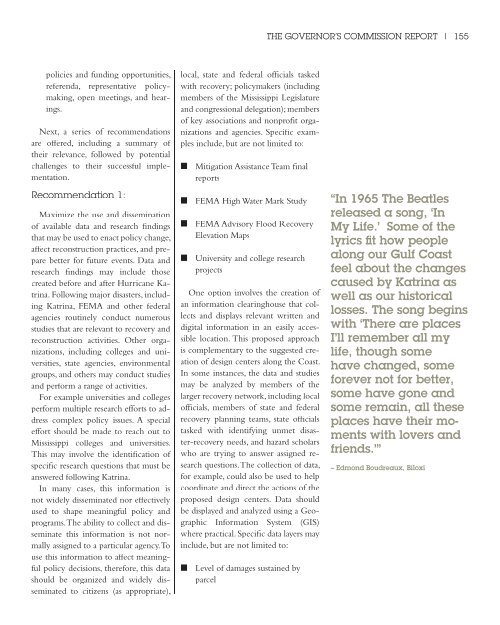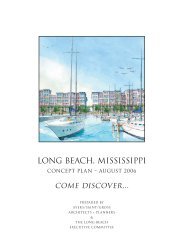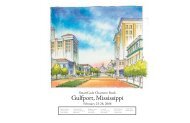Reports - Mississippi Renewal
Reports - Mississippi Renewal
Reports - Mississippi Renewal
- No tags were found...
You also want an ePaper? Increase the reach of your titles
YUMPU automatically turns print PDFs into web optimized ePapers that Google loves.
THE GOVERNOR’S COMMISSION REPORT | 155policies and funding opportunities,referenda, representative policymaking,open meetings, and hearings.Next, a series of recommendationsare offered, including a summary oftheir relevance, followed by potentialchallenges to their successful implementation.Recommendation 1:Maximize the use and disseminationof available data and research findingsthat may be used to enact policy change,affect reconstruction practices, and preparebetter for future events. Data andresearch findings may include thosecreated before and after Hurricane Katrina.Following major disasters, includingKatrina, FEMA and other federalagencies routinely conduct numerousstudies that are relevant to recovery andreconstruction activities. Other organizations,including colleges and universities,state agencies, environmentalgroups, and others may conduct studiesand perform a range of activities.For example universities and collegesperform multiple research efforts to addresscomplex policy issues. A specialeffort should be made to reach out to<strong>Mississippi</strong> colleges and universities.This may involve the identification ofspecific research questions that must beanswered following Katrina.In many cases, this information isnot widely disseminated nor effectivelyused to shape meaningful policy andprograms. The ability to collect and disseminatethis information is not normallyassigned to a particular agency. Touse this information to affect meaningfulpolicy decisions, therefore, this datashould be organized and widely disseminatedto citizens (as appropriate),local, state and federal officials taskedwith recovery; policymakers (includingmembers of the <strong>Mississippi</strong> Legislatureand congressional delegation); membersof key associations and nonprofit organizationsand agencies. Specific examplesinclude, but are not limited to:■ Mitigation Assistance Team finalreports■ FEMA High Water Mark Study■ FEMA Advisory Flood RecoveryElevation Maps■ University and college researchprojectsOne option involves the creation ofan information clearinghouse that collectsand displays relevant written anddigital information in an easily accessiblelocation. This proposed approachis complementary to the suggested creationof design centers along the Coast.In some instances, the data and studiesmay be analyzed by members of thelarger recovery network, including localofficials, members of state and federalrecovery planning teams, state officialstasked with identifying unmet disaster-recoveryneeds, and hazard scholarswho are trying to answer assigned researchquestions. The collection of data,for example, could also be used to helpcoordinate and direct the actions of theproposed design centers. Data shouldbe displayed and analyzed using a GeographicInformation System (GIS)where practical. Specific data layers mayinclude, but are not limited to:■ Level of damages sustained byparcel“In 1965 The Beatlesreleased a song, ‘InMy Life.’ Some of thelyrics fit how peoplealong our Gulf Coastfeel about the changescaused by Katrina aswell as our historicallosses. The song beginswith ‘There are placesI’ll remember all mylife, though somehave changed, someforever not for better,some have gone andsome remain, all theseplaces have their momentswith lovers andfriends.’”– Edmond Boudreaux, Biloxi




